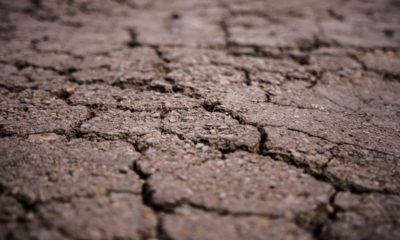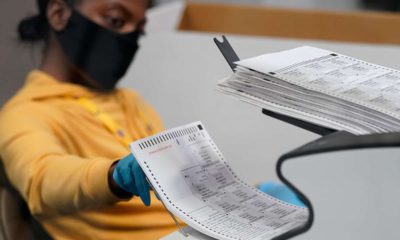Published
4 years agoon
By
CalMatters
A week before Election Day and anxiety over the postal service’s ability to ferry voters’ ballots to county election administrators on time has ratcheted up yet again.
Here are the reasons the alarm bells are ringing anew:

Ben Christopher
CalMatters
But election administrators and legal experts have a message for voters here: Breathe.
First, about that warning from the postal service: California is different.
This summer, state legislators passed a law giving any ballot postmarked before the polls close up to 17 days to wend its way from a voter’s mailbox to county administrators. The law was meant to ensure that even the most catastrophic of postal snafus wouldn’t disenfranchise mail-in voters.
The Postal Service’s warning is “what you get when other agencies try to do your job for you,” said Santa Cruz County Registrar Gail Pellerin. With California’s 17-day window for incoming ballots, voting by mail ought to be a safe option at least until the coming weekend, she said. If voters want to be extra cautious, they can take their ballot directly into a post office: “Walk it in and get it postmarked.” Or deposit it in a county-managed drop box or at a vote center.
Second, about that Kavanaugh opinion: again, California is different.
As UC Irvine law professor Rick Hasen wrote in the Washington Post, the linchpin of Kavanaugh’s opinion wasn’t his antipathy to counting ballots after November 3. It was an argument about judicial overreach and which branch and level of government has the power to set election rules.
Here’s the chain of events that led up to this opinion: Wisconsin state law, passed by its legislature, requires all ballots to be in by the end of Election Day. In September, a federal judge ruled that, in light of the pandemic, counties should ease up those restrictions and allow otherwise valid ballots to be counted six days after the fact. The Supreme Court reversed that ruling.
From Kavanaugh’s opinion:
“Assessing the complicated tradeoffs involved in changing or retaining election deadlines…is primarily the responsibility of state legislatures and falls outside the competence of federal courts.”
That reading of the constitution, Hasen writes, gives state legislatures “almost absolute power to set the manner for conducting presidential and congressional elections.”
Fortunately for fans of California’s 17-day election rule, it was penned by the Legislature. In an email, Hasen said that he does not “anticipate any issues along this line” in California.
Via the Post It, CalMatters political reporter Ben Christopher shares frequent updates from the (socially distanced) 2020 campaign trail.


‘With Reservations’: Trump Voters Grapple With Biden’s Win


Turning the Page? Republicans Acknowledge Biden’s Victory


Walters: California Is No. 1 — in Rough Highways


Trump Thought Courts Were Key to Winning. Judges Disagreed.


Rationales Shift as Nevada Considers Future of Vote by-Mail


Trump Directs Administration to Allow Biden Transition Process




